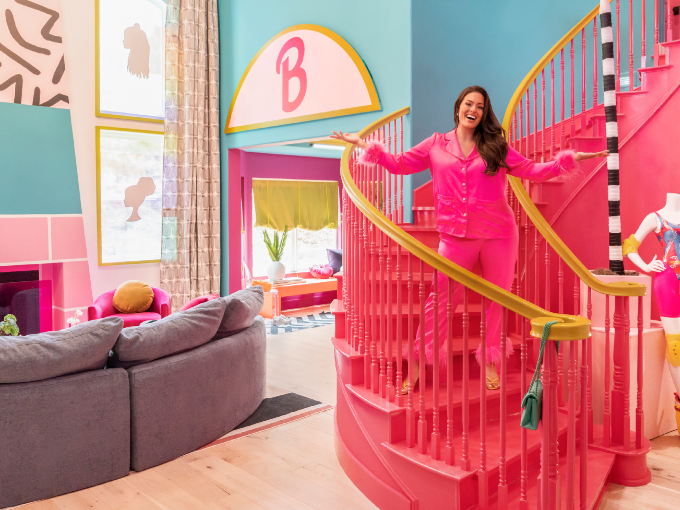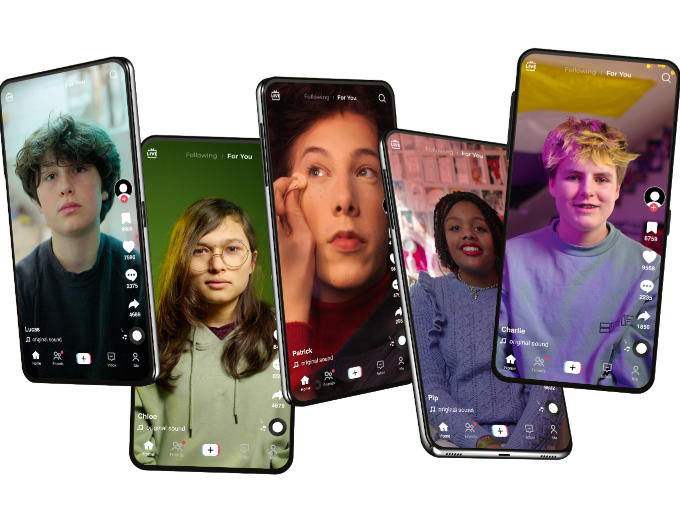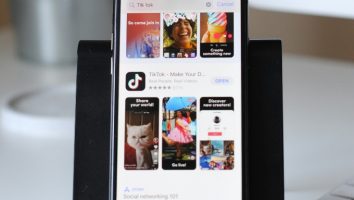From Nickelodeon’s iconic trivia/stunt show Double Dare to Fox’s long-running cooking competition format MasterChef Junior, television has had its fair share of unscripted kids and family hits over the years.
But despite the genre’s co-viewing appeal and previous successes, buyers have traditionally chosen to invest more in scripted content. It’s the same story today, though changes are afoot. In streaming circles alone, the number of unscripted commissions from global SVODs jumped by 35% last year, according to UK-based research firm Ampere Analysis.
Unscripted kids and family content is becoming a more popular option to produce and buy for a number of reasons. First, it’s generally much cheaper and faster to make than high-budget scripted television and increasingly costly premium animation; second, it often provides co-viewing opportunities to bolster family subscriptions and TV ratings; and third, it’s affordable at a time when most streamers and broadcasters have been cutting their overall budgets to maintain profitability amid high inflation.
“That runaway commissioning the streamers have been doing over the last couple of years has obviously slowed down,” says Kirsten Hurd, commissioning editor at Canadian public broadcaster TVOKids. But she adds that as the industry recovers, unscripted shows will likely become more important for broadcasters and streamers to round out schedules with new programs.
And as animation gets harder to finance, Hurd predicts the industry will move towards lower-budget live-action series. “We always like to have a few unscripted shows in the pipeline because we know that a lot of amazing animated IPs we are either developing or looking at as potential pre-buys might not get financed for as long as two years—or even see the light of day at all—because financing is getting really difficult.”
Unscripted is also an important genre for TVOKids because it’s well-suited for blending education and entertainment, which satisfies both the channel’s preschool audience and Ontario’s provincial education ministry, which oversees TVOKids.
The channel currently produces two to three unscripted series per year starring real, relatable kids. Hurd points to popular shows such as Apartment 11’s Raven’s Quest, which profiles Indigenous kids across Canada, and spinoff series Sunny’s Quest, which spotlights aspirational first-person stories of Black Canadian children, as great examples of unscripted shows that resonate with the TVOKids audience. “Real kids love to see kids like them[selves] on screen,” she says.
TVOKids is very much aimed at children, without a lot of co-viewing programming. But it sometimes goes beyond this wheelhouse, as it did for Norwegian format adaptation All-Round Champion (pictured at top), a marblemedia production that TVOKids, Canada’s Knowledge Network and BYUtv in the US commissioned in 2019. Already at the five-season mark, the series focuses on 10 tween/teen athletes who compete at high levels in sports like diving, gymnastics and skateboarding.
“All-Round Champion is one of those shows that I know, anecdotally, families absolutely watch together because it has something for everyone,” says Hurd. “Having Canadian Olympic track athlete Perdita Felicien as the host helped it become a runaway hit, as did inviting other well-known athletes to serve as mentors for the kids. We took a chance on it, and it’s been a consistent, popular show on broadcast and on all of our digital channels.”
Family time
Phil Breman, head of live-action series development at Mattel Television, says much of the unscripted genre’s growing popularity can be attributed to families wanting to watch more shows together after the pandemic. Because unscripted content allows for co-viewing, buyers of all stripes are taking advantage, even ones that weren’t primarily interested in unscripted programming.
“As much as the world is shrinking in terms of content buyers, there is a really big demand for unscripted fare in general,” Breman says, adding that Mattel TV’s two biggest unscripted priorities right now are Hot Wheels: Ultimate Challenge, which had a May 30 premiere on NBC, and Barbie Dreamhouse Challenge, which debuted July 16 on HGTV.

Mattel TV is meeting demand for family-skewing content with unscripted shows like Barbie Dreamhouse Challenge
“When you think about Hot Wheels and Barbie, they are that perfect balance of nostalgia and zeitgeist,” says Breman. “They appeal to both eight-year-olds who want to play with the toys and dolls, and also 80-year-olds who did play with them and maybe are collectors now.”
Asked if family audiences are more drawn to higher-budget, shiny-floor competition shows or smaller, unscripted series, Breman says it all depends on the concept. “I don’t think audiences are necessarily sitting down for big and splashy; they just want to be entertained,” he says. “Our Pictionary show doesn’t have those big-budget elements, nor does it need them.”
Robert Fortuijn, head of children’s programming at Dutch broadcaster NPO, also sees a bright future for lower-budget unscripted shows for kids. “There’s still lots of demand for smaller unscripted shows,” says Fortuijn, who oversees NPO’s Zappelin preschool block and Zapp block for nine- to 12-year-olds.
Nearly 70% of Zapp’s lineup consists of unscripted content, and NPO made a switch two years ago to only make family-skewing TV shows for the block. “When we don’t [skew to families], we notice that it doesn’t work anymore,” says Fortuijn. “For kids-only content, we have our YouTube channel, our app and social platforms; but if it’s TV, it is always family viewing.”
And like TVOKids, NPO is focused on providing unscripted shows that detail the real lives of local kids. “We see that our audience expects this of us. Plus, in Holland, we are the only broadcaster that doesn’t have any commercial ties…so for unscripted, this fits us like a glove.”
Vertical video velocity
Looking at other screen opportunities for unscripted kids content, social platforms such as TikTok, Instagram Reels and YouTube Shorts are providing new ways for broadcasters like TVOKids and NPO to connect and engage with their audiences.
And the value of replicating social media video—especially content where kids watch other kids and adults do things—is growing for TV producers. “This could help explain where a lot of the growing interest in the unscripted kids space is coming from,” says Gary Pope, CEO of family research agency Kids Industries.
TVOKids, for one, has found success with Know Brainers, a digital-first, docu-style series for tweens and teens that premiered in October 2022 and recently won Best Unscripted Live-Action Program for ages nine and up at Canada’s Youth Media Alliance 2023 Awards of Excellence.
The show features the former hosts of TVOKids’ daily live show The Space as curious amateur investigators who solve problems and conquer challenges using DIY experimentation and inquiry-based thinking related to STEAM education.

TVOKids’ digital-first docu-style series Know Brainers is focusing primarily on YouTube, YouTube Shorts and Instagram
The in-house YouTube series also launched on TikTok, but when Canada banned the Chinese-owned video-sharing app from all government-issued mobile devices in February, TVOKids pivoted its platform focus for Know Brainers to just YouTube, YouTube Shorts and Instagram Reels.
“TVOKids hasn’t tried to hit that tween and teen audience for a long time, so Know Brainers is a new venture for us,” says Hurd. “We are really focusing on YouTube Shorts right now because that is the type of content [one-minute-or-less vertical video] kids are really looking for.”
For TVOKids and Know Brainers executive producer Alex Sopinka, the show’s longer eight- to 12-minute YouTube episodes are a lot easier to create than one-minute-or-less vids for YouTube Shorts. “In a minute-long video, we need to include some education, but then no one wants full educational content. So we need to make it fun, but then we also want to develop our hosts, so we need some of their personality, too,” he explains. “Trying to fit all of these things into a one-minute video is one of the hardest things to do, and we are still learning.”
As for NPO, it has a TikTok hit in No Label For Me, a docuseries about teens who feel pressure to fit in with conventional ideas of gender roles.

Socially conscious docuseries No Label For Me, which follows teens dealing with gender role pressures, has become a TIkTok hit for Dutch broadcaster NPO
Each six-minute episode gets uploaded daily after school, and it has so far been a success with kids, according to Fortuijn. “It’s a nice counterbalance to talk and inform, instead of judging each other. And as a public broadcaster, it’s nice to have solid social content on TikTok.”
This story originally appeared in Kidscreen’s August/September 2023 issue.
























